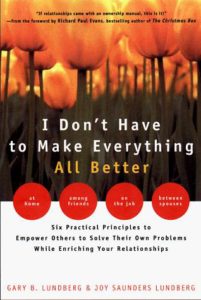I have been giving a new way of eating a go for the last few months. It’s high-fat, medium-protein, low-carb (HFLC).
Zoinks!?
High freaking fat, you exclaim. Has he gone mad!
Well, possibly.
One thing I do know is that I’ve lightened the load my godlike thighs have to carry by about twenty pounds, which is a nice thing. Oh, and by the way, I’ve paired this with intermittent fasting.
Horrors!
Yes, it is Halloween. Or was a few days ago.
In a few more months, when I’ve given this method a good long test, I’ll explain exactly what this is all about. But I’ll tease you by saying that it seems the scientific community isn’t immune to bias and jumping the gun. Not even close. We’d like to think they are, all those men and women in their white lab coats, but they aren’t. In fact, there are a number of doctors and researchers right now demonstrating that the advice we’ve been getting about fat and carbohydrates since the late 1970s was wrong. Like 180 degrees wrong.
Let me point you to some presentations you can watch about this right now.
“The Two Big Lies of Type 2 Diabetes” by Jason Fung, MD
“Reversing Type 2 diabetes starts with ignoring the guidelines” by Sarah Hallberg, MD
“Therapeutic fasting” by Jason Fung, MD
Okay, so with that lead up, who’s up for a delicious, high-fat meal? Here’s one of my favorites.
I call it “Mexican Hummus.” I found it in Always Hungry? By David Ludwig, MD, PhD. He calls it “Cheesy Pinto Bean Dip.” Which isn’t a bad name, but isn’t inspiring. You might call it modern refried beans, but that sounds like something out of a can or glopped onto the side of your dish. But Mexican Hummus, that has some class. A little zip.
Whatever you call it, it tastes great.
Use as a dip for red, orange, or yellow bell peppers cut into strips. Or eat it as a side. I like it with baked chicken thighs. It’s also good with fajita veggies—sautéed peppers and onions cooked with lots of butter, salt, and a bit a chili powder—and some slices of avocado.
MEXICAN HUMMUS
- Mix the following in food processor for 30 seconds or until smooth
- 1 C cooked pinto beans, drained and rinsed
- 4 tsp extra-virgin olive oil
- ¼ C water
- ½ tsp chili powder
- ¼ to ½ tsp salt
- Mix in ¾ C shredded cheddar cheese (you want cheddar cause it melts well)
- Heat in microwave or on stove until cheese just melts. Stir.
HOMEMADE CHILI POWDER
I don’t like the chili powder you get in the stores—it’s too strong, overwhelms everything I put it into, and gives me heartburn. So I found a recipe that’s awesome and make my own.
Mix the following together. Choose the amounts in the ranges shown based on your tastes.
- 2 tablespoon paprika
- ¾ to 1½ teaspoon onion powder
- 1½ to 2 teaspoon dried oregano
- ½ to 1 teaspoon cumin
- 1½ t garlic powder (optional)
- ½ to 1½ teaspoon cayenne (optional, I put in barely a pinch; I do NOT like it spicy)
HERB-ROASTED CHICKEN THIGHS
This has got to be the easiest recipe on the planet for chicken.
- 6 to 8 bone-in, skin-on chicken thighs (about 2 pounds)
- 1 tablespoon extra-virgin olive oil
- 1 to 2 teaspoons dried herb blend (Italian herb mix, poultry mix, lemon chicken mix, or chili powder above)
- ½ to ¾ teaspoons of salt
- ¼ teaspoon ground black pepper
Instructions.
- Preheat oven to 350 degrees
- Grease a 9×9 inch baking dish with butter or some extra-virgin olive oil
- Put chicken skin side up in baking dish
- Brush with the olive oil
- Sprinkle on the herb blend, salt, and pepper
- Bake for 45 minutes.
- If you want, you can baste a couple of time through the cooking by spooning the juices in the baking dish over the thighs.
Bon appetite.
















